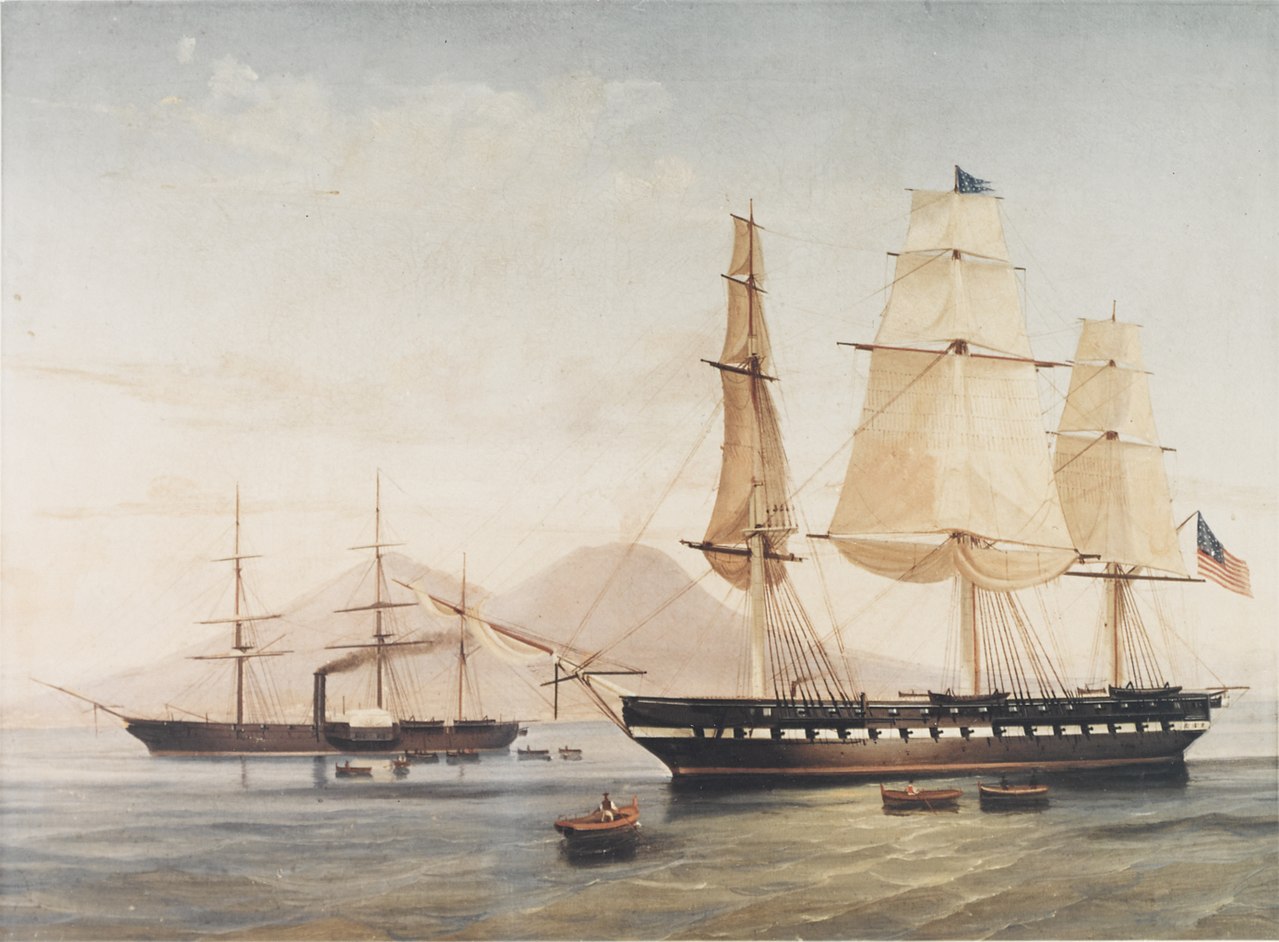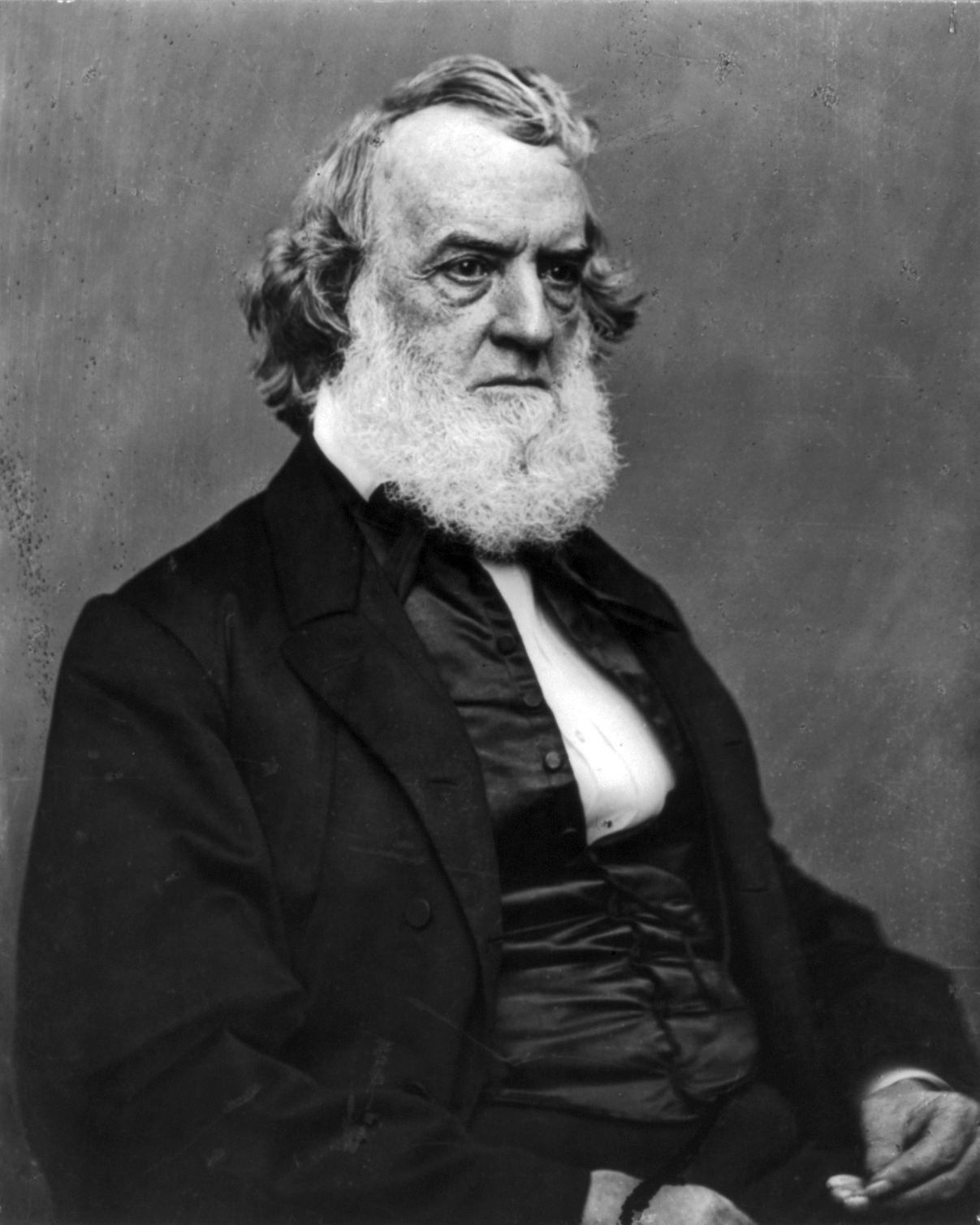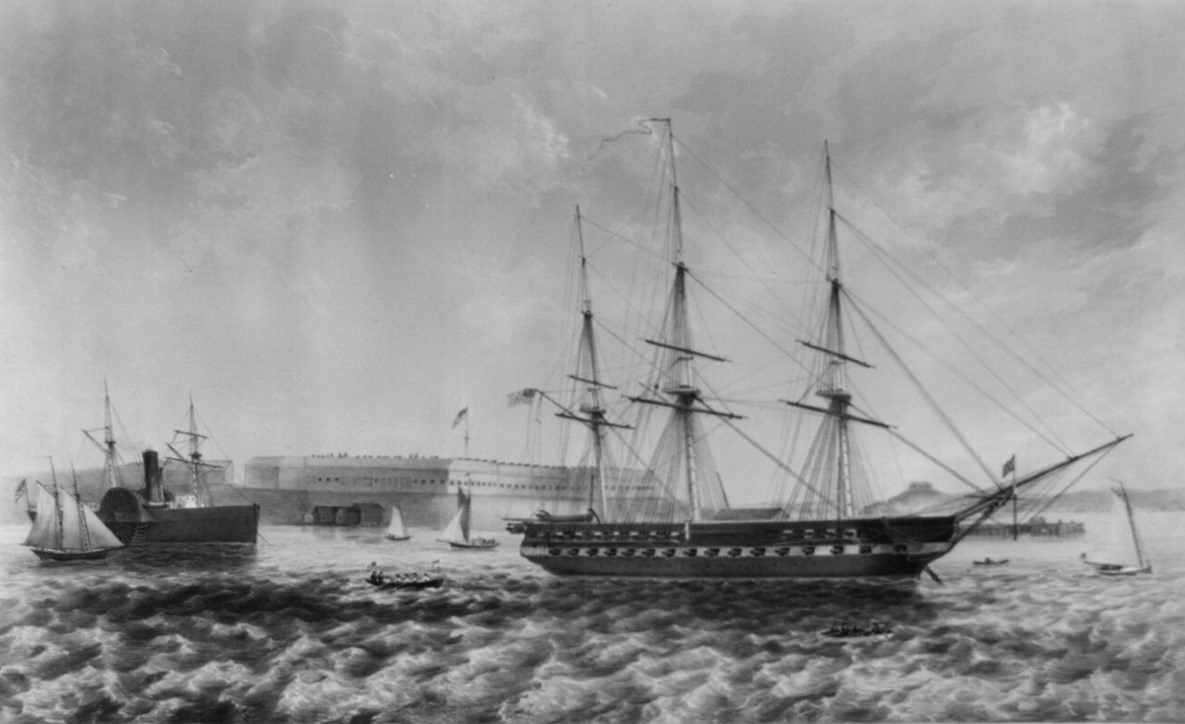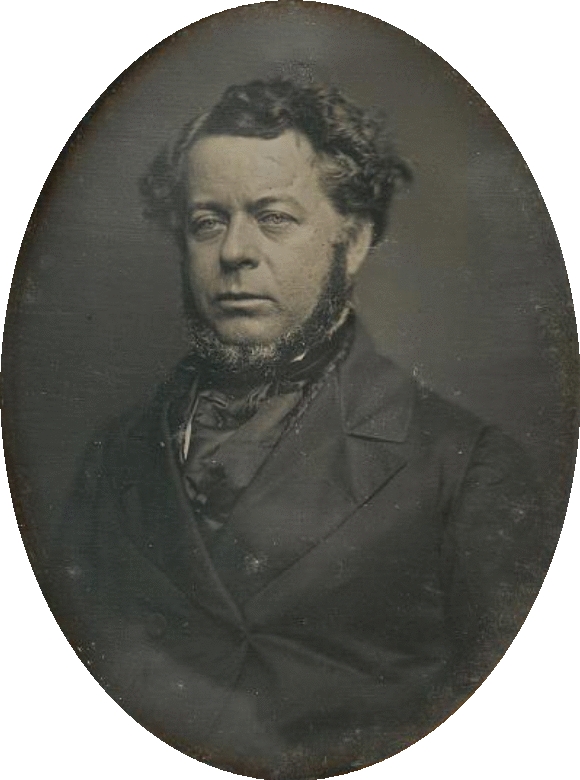Reader Suvorov has graciously agreed to provide extracts from a paper he wrote on Southern commerce raiding during the Civil War.
When it comes to Civil War naval history, the conflict between the Virginia and the Monitor, or the trials of the South’s submarine Hunley, or David Farragut’s sprint through a field of “torpedoes” at Mobile Bay—all of which happened just off the coastline of the United States—often overshadow the conflict on the high seas, and the South’s deployment of a much more archaic technique: commerce raiding and privateering.

USS Congress and USS Susquehanna, pre-war frigates of the USN
Yet commerce raiders were an important part of the Southern strategy to defeat the Northern blockade of their ports and weaken the Union’s will to fight. While they were ultimately unsuccessful at that task, they were remarkably effective, as we’ll see throughout this series. In this first post, we’ll examine the “starting positions” on both sides.
Each navy started with the benefit of new leadership. On the U.S. side, Gideon Wells was appointed as Secretary of the Navy for political reasons, but quickly dove headfirst into dealing with the vast logistical needs of the Union Navy and confronting “[t]he excessive accumulation of older officers,” that filled the Navy’s upper ranks. More than half of the Union’s commissioned naval force were sailing vessels, which were considered obsolete, and the Navy was still modernizing its forces and familiarizing its personnel with steam technology. At the onset of the war, the U.S. Navy possessed 17 frigates (10 sail, 7 screw), 10 ships-of-the-line, and (setting aside transport and logistics vessels) 23 sailing brigs or sloops and 28 steamships. Many of these ships were unfit for action or stationed overseas when the conflict began. These numbers were less than sufficient to the task at hand, once war broke out. In short, Welles needed new ships and new officers, and lots of them.

Guideon Wells
Lincoln—concerned by the prospects of Confederate privateering—proclaimed a blockade of the Southern coastline on April 19, 1861, and on May 3, 1861, General Winfield Scott would explain to General George McClellan that his strategy would “rely greatly on the sure operation of a complete blockade of the Atlantic and Gulf ports soon to commence” and called for forty steamboats and a number of gunboats to deliver 60,000 men down the Mississippi River. The blockade might have been more proclamation than paddlewheels in the early months of the war, but it was already shaping up to play a significant role in Northern war planning. The Navy quickly began procuring ships, both by commencing the construction of new vessels and by purchasing vessels suitable for the navy’s needs, which—given the magnitude of the blockade—were primarily oriented towards the construction of small gunboats and riverine craft, not seagoing vessels.

Constitution off Newport, Rhode Island
As for new officers, Congress passed a mandatory retirement law in December of 1861 to clear the older officers from the Navy, which set upon the task of manning the craft it was creating. This was a harder task than the construction of new vessels, for experienced seamen and officers were difficult to find. By drawing upon the ranks of the merchant marine for seamen, and pressing Naval Academy midshipmen into service, the Navy was able to make ends meet, but it still suffered from personnel shortages throughout most of the war—in part due to the fact that the draft quota did not take the service of mariners into account.
After the recall of most overseas ships, the Union would do its best to enforce the blockade with, initially, fewer than forty ships. While Welles could not work miracles, he came close: by the summer of 1861, the number of commissioned ships doubled, and the size of the navy continued to rise rapidly until the end of the war.
While Welles whipped the U.S. Navy into shape, Confederate Secretary of the Navy, Stephen Mallory, set about to create a Southern seafaring force essentially ex nihilo. The Union might have started the fight on the wrong foot, but the South went forward with no feet at all, where the war at sea was concerned.

Stephen Mallory
The South had only Norfolk and Pensacola to serve as shipyards and the Tredegar Iron Works for the creation of heavy artillery, and Southern Authorities seized few ships in the opening days of the war. Mallory, in his career as a U.S. Senator from Florida, had ironically championed naval personnel reforms similar to the ones employed by his new Northern adversaries, and was an early advocate of the ironclad. Now he was in a position to benefit from the relative lack of success that had plagued his attempts to reform and modernize the United States Navy. Mallory understood that the South would not be able to match the North gunboat for gunboat, and this necessity drove the Confederacy to innovation—most famously, of course, ironclads, naval mines, and the submarine. Mallory’s objective in conducting a naval war was to stymie Northern attempts at a blockade, and while his ironclads were supposed to defeat Union efforts closer to home, his strategy also relied on more conventional ships to savage Union shipping and pull Northern vessels away from the coastline on a wild goose chase in pursuit of Southern raiders.
Despite the fact that Mallory’s navy would have to be cobbled together from scratch, the Confederate government nevertheless saw the fight at sea important enough to create a Department of the Navy in February of 1861 and, a few months afterwards, pass a law “concerning letters of marque, prizes, and prize goods.” Southern privateers operating under that law would begin operating almost immediately, which will be the subject of the next entry in this series.

Comments
Raphael Semmes in 1851- "(Commerce raiders) are little better than licensed pirates; and it behooves all civilized nations to suppress the practice altogether."
Ironic.
Sadly, the 20th century would look back at licensed pirates as being the good old days. Much better to be captured by a privateer than just torpedoed in the mid atlantic.